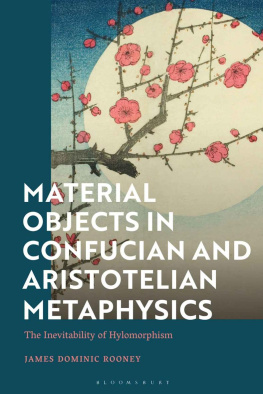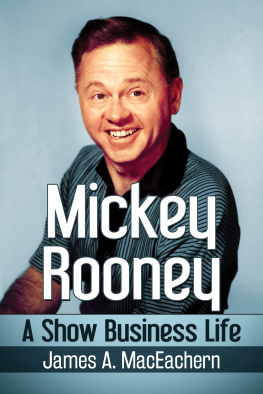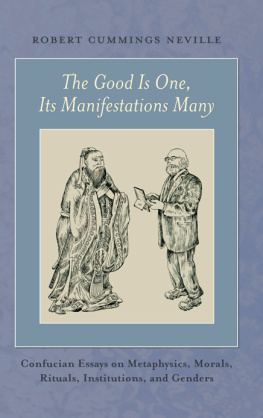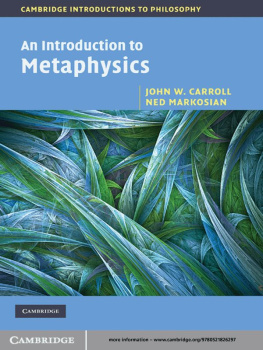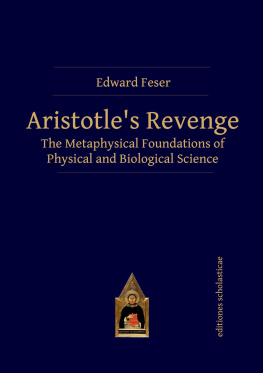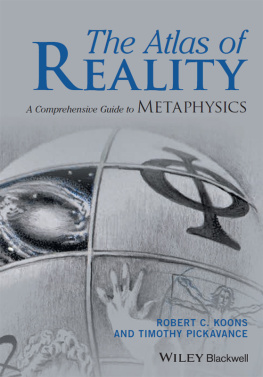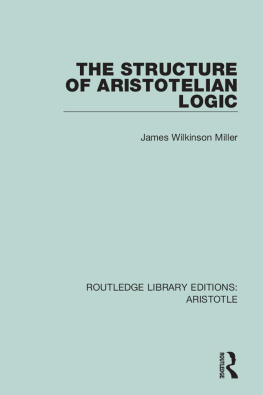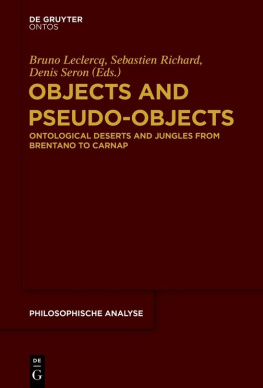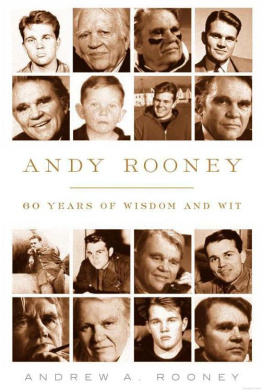James Dominic Rooney - Material Objects in Confucian and Aristotelian Metaphysics
Here you can read online James Dominic Rooney - Material Objects in Confucian and Aristotelian Metaphysics full text of the book (entire story) in english for free. Download pdf and epub, get meaning, cover and reviews about this ebook. year: 2022, publisher: Bloomsbury Publishing, genre: Romance novel. Description of the work, (preface) as well as reviews are available. Best literature library LitArk.com created for fans of good reading and offers a wide selection of genres:
Romance novel
Science fiction
Adventure
Detective
Science
History
Home and family
Prose
Art
Politics
Computer
Non-fiction
Religion
Business
Children
Humor
Choose a favorite category and find really read worthwhile books. Enjoy immersion in the world of imagination, feel the emotions of the characters or learn something new for yourself, make an fascinating discovery.
- Book:Material Objects in Confucian and Aristotelian Metaphysics
- Author:
- Publisher:Bloomsbury Publishing
- Genre:
- Year:2022
- Rating:5 / 5
- Favourites:Add to favourites
- Your mark:
- 100
- 1
- 2
- 3
- 4
- 5
Material Objects in Confucian and Aristotelian Metaphysics: summary, description and annotation
We offer to read an annotation, description, summary or preface (depends on what the author of the book "Material Objects in Confucian and Aristotelian Metaphysics" wrote himself). If you haven't found the necessary information about the book — write in the comments, we will try to find it.
Material Objects in Confucian and Aristotelian Metaphysics — read online for free the complete book (whole text) full work
Below is the text of the book, divided by pages. System saving the place of the last page read, allows you to conveniently read the book "Material Objects in Confucian and Aristotelian Metaphysics" online for free, without having to search again every time where you left off. Put a bookmark, and you can go to the page where you finished reading at any time.
Font size:
Interval:
Bookmark:
Material Objects in Confucian and Aristotelian Metaphysics
Also available from Bloomsbury
Cultivating a Good Life in Early Chinese and Ancient Greek Philosophy, edited by Karyn Lai, Rick Benitez, and Hyun Jin Kim
Nonexistent Objects in Buddhist Philosophy, by Zhihua Yao
Interpreting Chinese Philosophy, by Jana S. Roker
Transcendence and Non-Naturalism in Early Chinese Thought, by Alexus McLeod and Joshua R. Brown
Material Objects in Confucian and Aristotelian Metaphysics
The Inevitability of Hylomorphism
James Dominic Rooney, OP

Contents
I would particularly like to thank Drs. Eleonore Stump, Bryan Van Norden, Jonathan Jacobs, and John Heil for their solicitude and care in helping bring this project to fruition.
In addition, William Dunaway and John McGinnis gave much-appreciated feedback on the individual chapters, as did those at Wuhan Universityparticularly Zheng Zemian, Li Yong, and Matthew Lutz. Further, I would also thank my colleagues Jonathan Nebel, Alexandra Romanyshyn, Matthew Shea, Audra Goodnight, James Kintz, and all the members of the dissertation group for their conversations and feedback that deeply influenced the outcome. Patrick Zoll and Jeremy Skrzypek were exceptionally helpful in shaping the final form of the book through helpful comments.
Lastly, I owe a debt of gratitude to Justin Tiwald, who very graciously shared materials, and to those who corrected and reviewed my translations: Nan Hu with classical Chinese and Adrian McCaffery, O.P., with Latin.
Soli Deo Gloria;
all faults being attributable to the author.
A Chinese poet living in the Song dynasty wrote these lines:
A plum tree without snow does not shine forth;
Snow, without poetry, is overly common;
At sunset, a poem finished, heaven again brings snow;
Together with the plum trees, spring is then fully complete.
Many people believe there are material objects: cats, quarks, protons, pieces of gold, human beings, chairs, and tables. Many might also count such things as plum trees and snow. But what is generally not taken for granted is that the poets final line should be taken to mean that spring formed one material object composed of the poem, the plum, and the snow as its parts. If someone thought the poet was talking about a special sort of material thing, a poem-plum-snow thing, such a person might be taken to have a very unnatural reading of the poem. There is something strange about thinking the plum is a part of the moon, because the plum is (of course) on earth and the moon quite far away. And even putting those two closely together, pulling the moon down right next to the plum tree, does not seem to many people to make those things one material thing.
Explaining what it is that sets apart the plum tree as a genuine material object, but not the plum-moon-spring-snow object, or saying what makes the plum trees leaves or flowers its parts (but not the moon), nevertheless, is a complicated task. Peter van Inwagen, in his book Material Beings, famously called attention to the way in many of our puzzles about how material things can change parts over time, the best known of which is the puzzle of the Ship of Theseus, all centrally involve assumptions about what it is for one thing to be a part of another. He formulated what he called the Special Composition Question (SCQ) to get to the heart of the matterin what circumstances is a thing a (proper) part of something?where the SCQ is a general question centered around when some things compose a material object rather than, for example, being a heap of things merely close together.
Depending on the answer one gives to the SCQ, what counts as a composite material object can be radically different. If we hold the view that there are no limits on how or when parts come to compose objects, for example, our world will be densely populated with lots of odd objects we ordinarily do not recognize as objects; anything could be quite literally a part of any other thing. There would then be a material object literally composed of the plum tree, snow, and moon. Or, conversely, on another extreme view, if there are no situations under which things compose anything (i.e., objects never have any parts at all), there will be no composite objects. And so, there would be no spring composed of plums and snow, but also no plums or snow or poems. Rather, on such a view, there would only be simple, part-less objects (maybe electrons or the like). Each would presumably require a significant shift in how we understand the world, assuming that the radical nature of the called-for revision does not incline us to reject these theories.
The aforementioned extreme views on the SCQ are generally not held by ordinary folk. Instead, many hold a moderate view that there are things like cats and plum trees, but that it is not the case that any old set of things compose a material objectthere is no material object composed of three random pages of this book and your ear, for example. I will not be defending these moderate views of material composition but rather argue that, if they were true, all of these moderate answers to the SCQ would be variations on a very old account of how material objects are unified. This classical account is known as hylomorphism.
Hylomorphism derives from the metaphysics of Aristotle (although it is not, as I will show, a uniquely Aristotelian view), where material objects are composed of matter (hyle) and form (morphe). I will be arguing that if you are among those who hold that there are such material objects as plums and snow, but not the other weird material objects of the extreme answers to the SCQ (including poem-snow-plum-moon objects), you are going to be committed to a fundamentally hylomorphic way of thinking about material objects. That is, you are going to hold that something playing the role of a form is what makes it the case that some set of material parts all compose one thing.
To set the stage, however, I will begin by dealing directly with only one broad camp among hylomorphists, which has been called structural hylomorphism.And all are going to agree that the thing playing the role of formstructureis what makes something one material object. Yet exploring these theories can help us understand possible ways in which hylomorphism generally can resolve some of the puzzles of material composition and parthood, because not all of these authors I will survey agree on the way in which structure resolves these puzzles.
Thus, in the recent rise of interest in Aristotelian or neo-Aristotelian metaphysics, this kind of structural hylomorphism has been a prominent neo-Aristotelian view. Nevertheless, the various kinds of structural hylomorphism on offer span an array of metaphysical commitments. In particular, I will discuss three proponents of hylomorphism, Kit Fine, Kathrin Koslicki, and William Jaworski, who understand structure to function in significantly different metaphysical roles. In addition, while each claims that hylomorphism can help resolve problems in specific areas of philosophy (e.g., Jaworski utilizes hylomorphism to resolve issues in metaphysics of mind), all of these three thinkers explicitly propose hylomorphism as a satisfactory answer to van Inwagens aforementioned Special Composition Question. This makes their brands of hylomorphism particularly interesting avenues through which to consider the way in which hylomorphism interacts with contemporary mereology.
In what follows, I also show that there is a problem that affects each of these views. Despite the way in which Fine, Koslicki, and Jaworski differ in many particulars, all three accept a common principle that the parts of a substance can include things that are substances in their own right while they are part of the whole substance (i.e., a substance can have substance-parts). This principle characterizes, I propose, a uniquely structural aspect of structural hylomorphism, because it treats form as a kind of structuring of preexisting material objects.
Next pageFont size:
Interval:
Bookmark:
Similar books «Material Objects in Confucian and Aristotelian Metaphysics»
Look at similar books to Material Objects in Confucian and Aristotelian Metaphysics. We have selected literature similar in name and meaning in the hope of providing readers with more options to find new, interesting, not yet read works.
Discussion, reviews of the book Material Objects in Confucian and Aristotelian Metaphysics and just readers' own opinions. Leave your comments, write what you think about the work, its meaning or the main characters. Specify what exactly you liked and what you didn't like, and why you think so.

